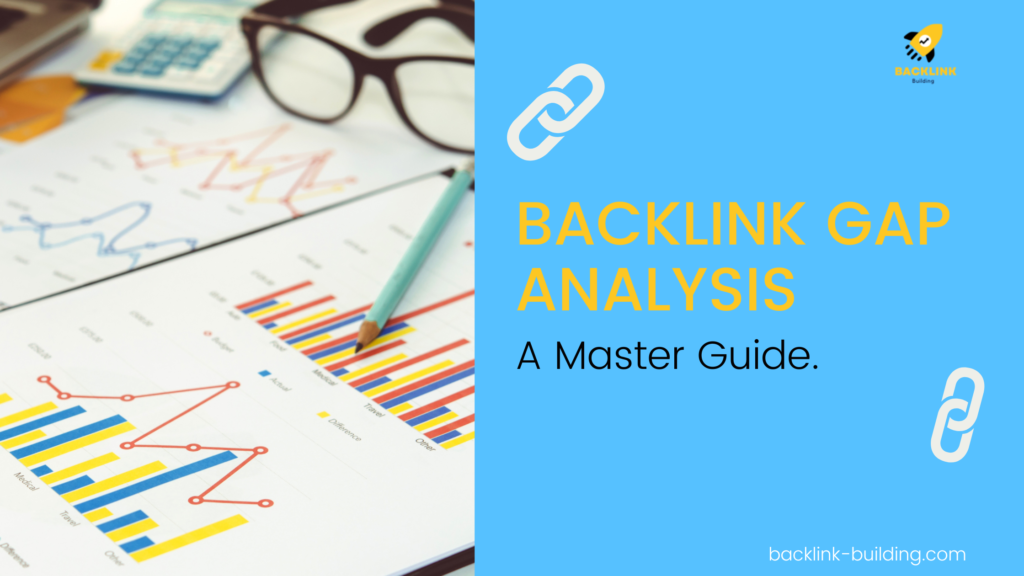
We have tried and tested several link-building strategies, but have you considered backlink gap analysis? It can be a valuable tool in your backlink strategy by identifying your competitors’ backlinks, but you don’t.
In this comprehensive guide, we’ll first define backlinks and backlink gap analysis. We’ll then discuss the pros and cons of this analysis and suggest five tools to help you perform this analysis. We’ll also answer some frequently asked questions about backlink gap analysis before sharing our final thoughts on the topic.
So, let’s get started by defining backlinks.
What Exactly Are Backlinks?
Backlinks, also known as inbound or incoming links, are links from external websites that point back to your website. These backlinks act as a vote of confidence for search engines and can help improve the authority and trustworthiness of your website in the eyes of search engines.
Why Are Backlinks Important?
There are several reasons why it’s essential. But here are the top few reasons:
1. Backlinks Can Improve Your Search Engine Rankings
Backlinks from high-authority websites can signal to search engines that your website is a credible and trusted source. By performing, Backlink Gap analysis, You can know from what authoritative site your competitor has backlinks. And backlinks are crucial in search engines algorithm updates like Google’s Penguin and Panda updates.
2. Backlinks Drive Referral Traffic To Your Website
When a backlink is clicked on, it can bring new visitors and potential customers to your website. By finding backlink opportunities through backlink gap analysis, you can increase the chances of referral traffic to your website.
3. Backlinks Can Improve Brand Awareness And Credibility
Having backlinks from authoritative and relevant websites can boost the trustworthiness and credibility of your brand in the eyes of customers and potential customers.
4. Backlinks Can Help Establish Relationships With Other Industry Players
By reaching out to websites that may have backlinked to a competitor’s website but not yours, This analysis allows you to establish connections with other industry players that could prove valuable in the long run.
5. Backlinks Can Increase Social Shares
Backlinks on social media platforms like Twitter and LinkedIn can increase the likelihood of your content being shared and reaching a wider audience.
Now that we’ve discussed why backlinks are essential, let’s understand backlink gap analysis.
What Is A Backlink Gap Analysis?
It involves identifying your competitors’ backlinks, but you do not. It can help uncover backlink opportunities for your website and drive traffic from external websites back to yours.
These backlinks opportunities can be precious if they come from high authority and relevant websites.
But before we dive into the pros and cons and suggest some backlink gap analysis tools, let’s first discuss why backlinks are essential in the first place.
Things To Consider While Performing Backlink Gap Analysis
There are a few things to remember, such as:
- Quality over quantity
- Relevance of backlinks
- Anchor text diversity
- Domain authority of backlink source website
- Frequency and timing of backlinks
- Nofollow vs. dofollow backlinks
- Link placement on the source website
- Variety of backlink sources
- Natural backlink profile
- Backlink history and potential risks
Pros And Cons Of Backlink Gap Analysis
Pros:
- Helps identify backlink opportunities from authoritative and relevant websites
- Can improve search engine rankings, referral traffic, brand awareness, relationships with industry players, and social shares
- It can give you a competitive edge over your competitors
- Can save time by automating backlink research instead of manually searching for backlink opportunities
Cons:
- May not always accurately track all backlinks (may miss some)
- It can be time-consuming to analyze backlink data and identify backlink opportunities
- It may require a subscription to use some analysis tools
Now that we’ve discussed the pros and cons let’s dive into five backlink gap analysis tools you can use.
Five Tools To Perform Backlink Gap Analysis
1. SEMrush
SEMrush is a comprehensive digital marketing toolkit that offers backlink gap analysis as one of its features. It allows you to compare your backlinks with those of up to five competitors and also provides insights on backlink sources and anchor texts used.
This tool also offers backlink audit and tracking features such as identifying and disavowing toxic backlinks. It has both versions for agencies and individual professionals, with pricing starting at $139.95 per month.
2. Ahrefs
Ahrefs is another digital marketing toolkit that offers backlink gap analysis among its features. It allows you to compare backlinks with up to 10 competitors, track backlink growth, and offer audit features.
Pricing for Ahrefs starts at $108 per month for the Lite plan, which includes backlink gap analysis features.
3. Moz Pro
Moz Pro is a comprehensive SEO toolkit that offers backlink gap analysis as one of its features. However, It allows you to compare your backlinks with those of your competitors and provides insights on backlink sources and anchor texts used.
This tool is updated regularly, ensuring it can keep track of backlinks even with the constantly changing search engine algorithms. Pricing for Moz Pro starts at $49 per month for starters.
4. Linkody
Linkody is a backlink monitoring tool that offers backlink analysis as one of its features. It allows you to compare backlinks with up to five competitors and offers backlink audit features.
Pricing for Linkody starts at $49.90 per month for the Pro plan, which includes backlink gap analysis features.
5. SpyFu
SpyFu is another excellent competitor analysis tool that includes backlink comparison features. It shows backlinks your competitors have that you don’t and offers filters to prioritize high-value links. It’s a good fit for marketers focusing on competitor-based SEO strategies.
Pricing for SpyFu starts at $39 per month for basic plan.
Frequently Asked Questions
Q. How Often Should Backlink Analysis Be Performed?
There is no set frequency for analysis as it depends on the nature of your website and industry. However, it should at least be performed periodically (e.g., every quarter or every six months) to track backlink growth and identify potential backlink opportunities.
Q. How Do Backlinks Impact Search Engine Rankings?
Backlinks are one of the top ranking factors for search engines like Google. But, Having backlinks from authoritative and relevant websites can improve your search engine rankings as it signals to search engines that your website is a credible source of information.
Q. Can This Analysis Be Performed Without Using Tools?
It is possible to perform backlink analysis manually by manually searching for backlinks and comparing them with those of competitors; however, it would be extremely time-consuming and may not accurately track all backlinks. It is recommended to use any backlink analysis tools to automate the process and provide more comprehensive insights.
Final Thoughts
Now that you know what it is and how to perform it using tools consider incorporating it into your link-building strategy. Regular analysis can help you identify opportunities and track backlink growth, improving your search engine rankings.
If you have any questions about backlink gap analysis, feel free to comment in the comment section. We will be happy to answer you.
Thanks for reading 🙂


